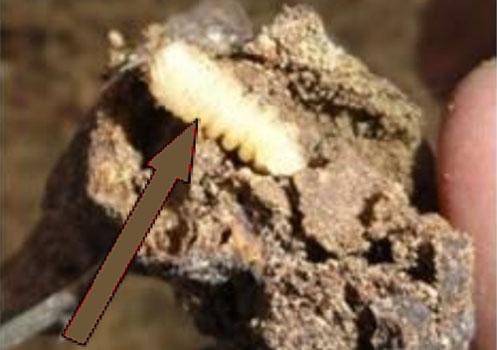|
Research studies |
| |
|
It is a small deciduous tree
attaining 2 to 6 m in height having oblong or ovate
leaves with a shining surface. The production of
this fruit has attracted several growers for its low
cultivation cost, drought tolerance and export
potential. |
 |
|
More... |
Farmers Help Desk |
| |
 |
|
Farmers can utilize the services by posting queries
through e-mails, telephones on scientific practices
and make pomegranate cultivation profitable.
Read More
|
|
|
|
|
|
|
|
|
|
Pest Management & Diagnosis!
|
Stem boring beetles, Koilosternia spinator (Fab.),
Zeuzera coffeae
|
|

Symptoms :
The grubs bore into the trunk, primary and secondary
branches.
The bored stem show yellowing followed by drying,
leading to dieback.
-
Control:
-
Detect early infestation by periodically looking out
for drying branches.
Examine branch for holes/ excreta/ gummosis. If detected, inject using a
disposable syringe (without needle) 5-10ml of
dichlorvos 2ml/litre and seal the hole with clay.
Cut out the drying portion of the branch and swab
copper-oxy chloride 50% WP on cut end. Spray all
surrounding trees with Quinalphos 2.5ml/litre or
chlorpyrifos 2.5 ml/litre.
It is good to give a prophylactic swab during May/
June on the main trunk with following mixture:
Carbaryl (50WP) 6g + Copper-oxy-chloride (50%
WP) 10g + (sticker 1 ml + Neem oil 1 ml) (all per
litre of water).
|
|
 |
|
|
|
|
|
|
|